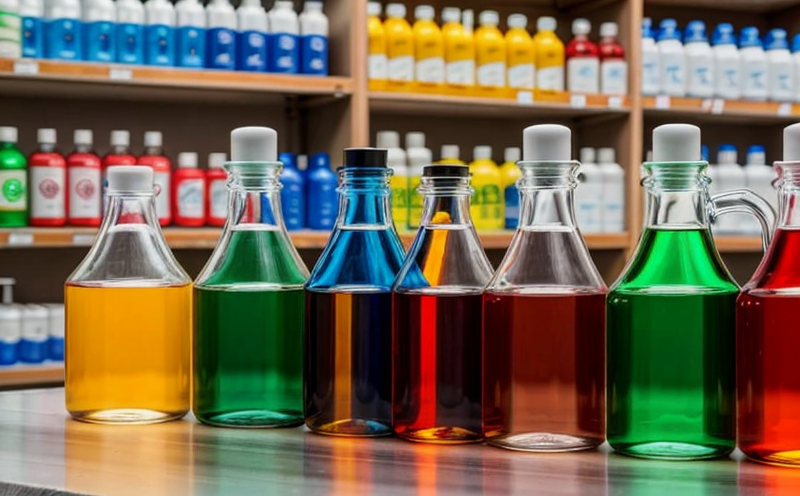Chemical screening of fabrics for REACH compliance
The European Union's Registration, Evaluation, Authorisation and Restriction of Chemicals (REACH) Regulation is one of the world’s most stringent and comprehensive chemical regulations. It governs the manufacture, import, export, and use of chemicals as well as their safe handling by consumers. Compliance with REACH is a critical requirement for businesses operating in or importing goods into the European Economic Area.
One of the key aspects of compliance involves ensuring that fabrics used in products do not contain any restricted substances listed under Annex XVII of REACH. This includes hazardous chemicals like phthalates, formaldehyde, and other harmful compounds known to pose risks to human health and the environment. The process of screening for these substances is crucial in preventing non-compliance issues that could result in product recalls, legal penalties, and damage to brand reputation.
Our laboratory specializes in providing comprehensive chemical screening services tailored specifically toward fabrics destined for European markets. Using state-of-the-art analytical equipment and adhering strictly to internationally recognized standards such as ISO 17025, we ensure that our results are accurate, reliable, and compliant with REACH requirements.
The testing process typically involves the following steps:
- Initial assessment of fabric samples for suspected restricted substances
- Preparation of specimens according to specified protocols
- Analytical analysis using various techniques such as gas chromatography-mass spectrometry (GC-MS), high-performance liquid chromatography (HPLC), and Fourier transform infrared spectroscopy (FTIR)
- Evaluation against relevant REACH criteria
- Generation of detailed reports outlining findings and recommendations for corrective actions if necessary
This approach allows us to deliver precise, actionable data that helps our clients stay ahead of regulatory changes while maintaining product integrity.
In summary, chemical screening plays a vital role in safeguarding both consumer safety and corporate responsibility by ensuring fabrics meet stringent REACH regulations. By partnering with us, your organization can benefit from expert guidance throughout the entire compliance journey—from initial testing through final report generation.
Why It Matters
Adherence to REACH requirements is not just a legal obligation; it also represents an opportunity for businesses to enhance their reputation and competitive standing in the global market. Non-compliance can lead to severe consequences, including heavy fines, product bans, and loss of customer trust.
- Legal Compliance: Ensuring that all materials used comply with REACH regulations helps prevent costly legal actions and ensures long-term sustainability for your business.
- Consumer Trust: By demonstrating commitment to safety standards, you build consumer confidence in your brand. This can translate into increased sales and loyalty among customers who prioritize ethical practices.
- Market Access: Meeting REACH criteria opens doors to the lucrative European market, which accounts for a significant portion of global trade.
In addition to these tangible benefits, staying compliant also fosters innovation within your organization. It encourages research into safer alternatives and promotes sustainable manufacturing processes that align with broader environmental goals.
Quality and Reliability Assurance
- Accreditation: Our lab is accredited to ISO/IEC 17025, ensuring that all tests conducted meet the highest standards of accuracy and precision.
- Standard Adherence: We strictly follow REACH guidelines as well as other relevant international standards such as Oeko-Tex Standard 100 for textile products.
- Repeatable Results: Our rigorous quality control measures guarantee consistent outcomes across multiple samples and testing sessions.
The reliability of our services is further bolstered by advanced instrumentation like GC-MS, HPLC, FTIR, and others that provide precise measurements and interpretations. These tools allow us to detect even trace amounts of restricted substances, ensuring thoroughness in every aspect of the screening process.
Furthermore, our trained technicians possess extensive knowledge and experience in handling complex analytical challenges associated with fabric analysis under REACH regulations. Their expertise ensures that no detail is overlooked during testing or reporting phases.
Competitive Advantage and Market Impact
- Proactive Compliance: By proactively addressing potential compliance issues before they arise, you can avoid costly last-minute adjustments and penalties.
- Innovation Leadership: Staying ahead of regulatory trends allows your company to explore new opportunities for product development and differentiation.
In today's competitive landscape, maintaining high standards is essential. Customers increasingly demand transparency regarding the sourcing and production processes behind their purchases. By demonstrating robust adherence to REACH regulations, you signal to stakeholders that your enterprise operates ethically and responsibly.
Moreover, compliance with such stringent guidelines enhances your brand’s image in the eyes of eco-conscious consumers who prefer companies committed to sustainability. This positive perception can lead to enhanced brand loyalty and potentially higher market share.





